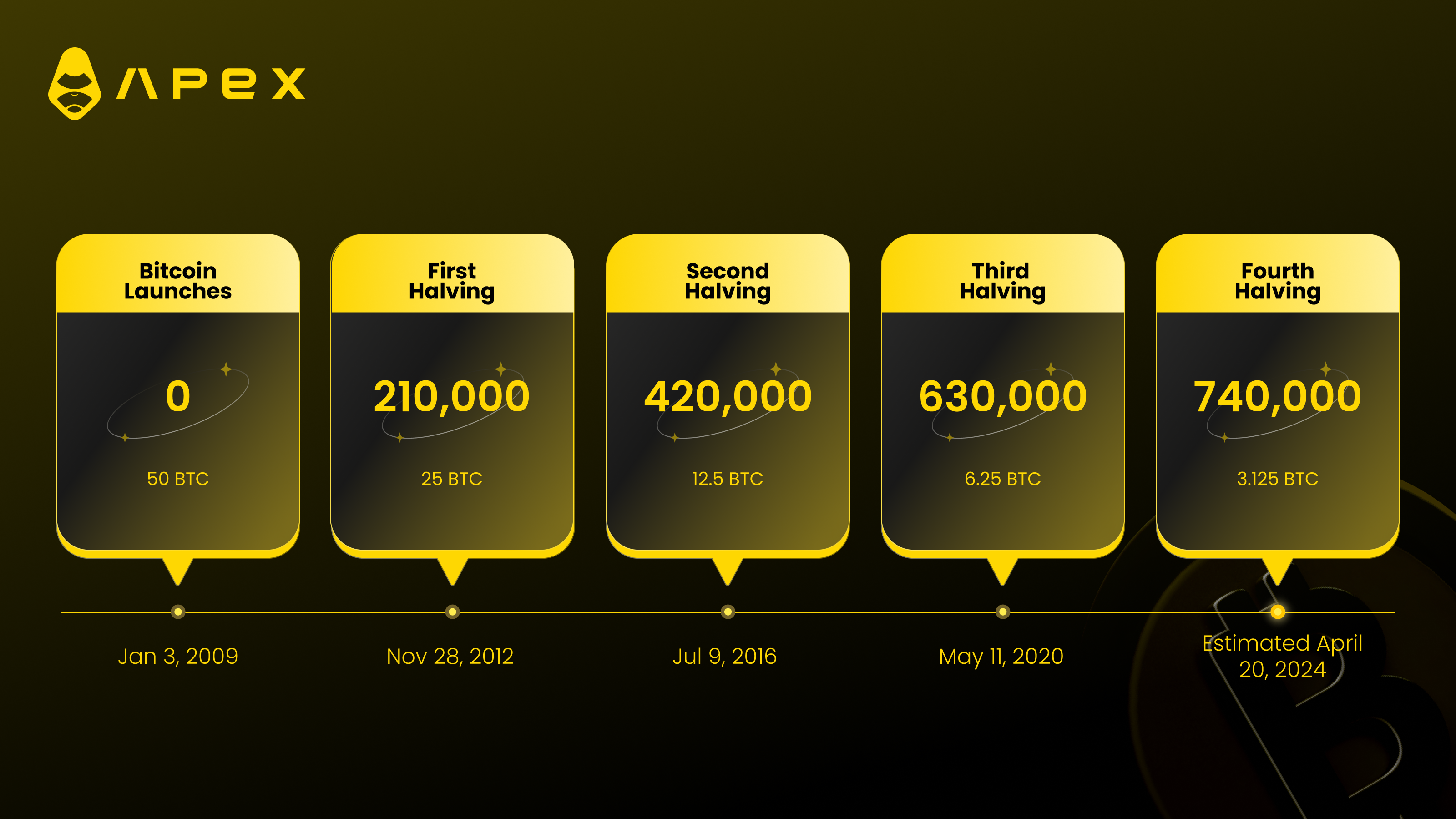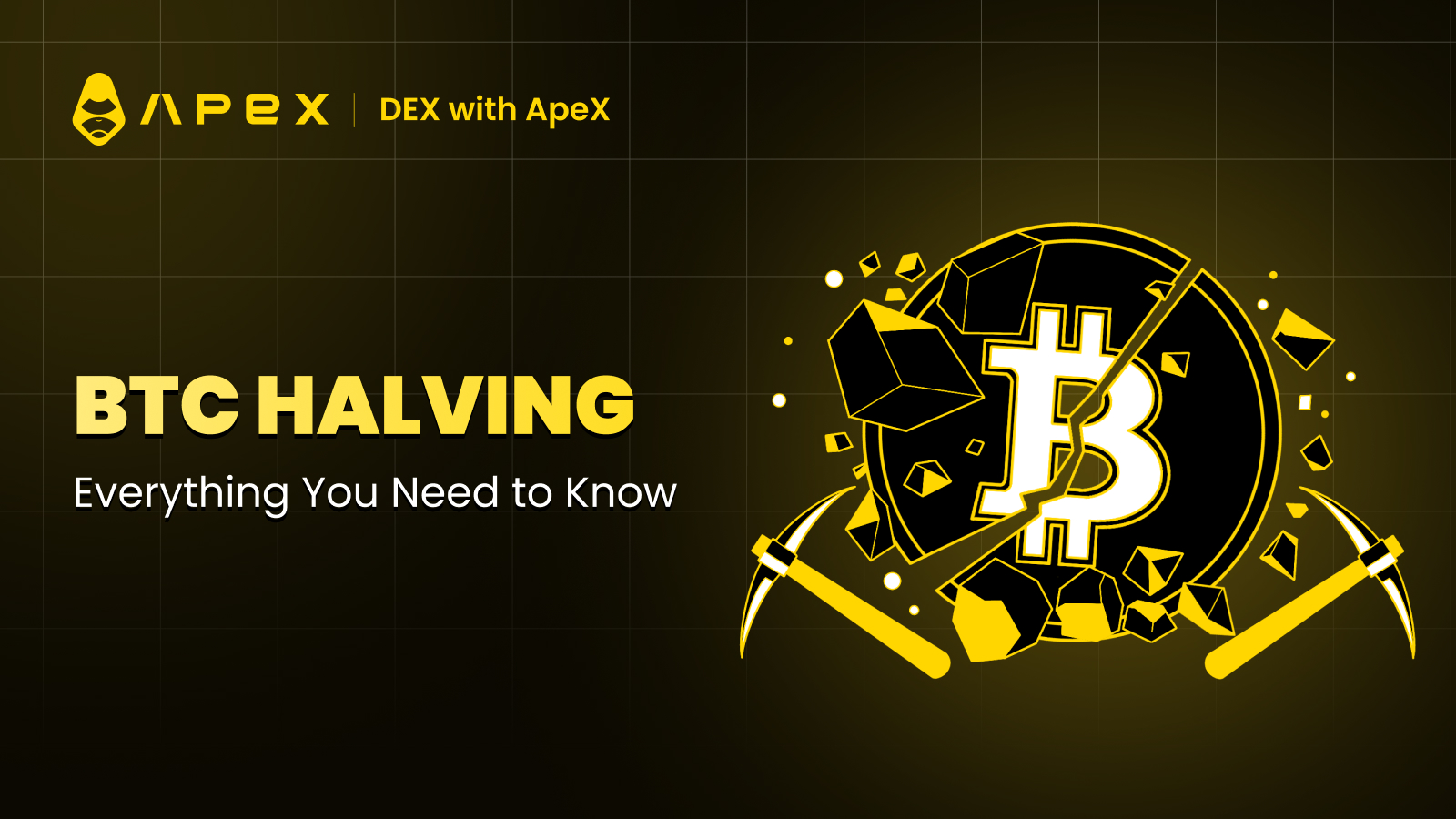Bitcoin (BTC) halving is a pre-programmed feature of the Bitcoin protocol that occurs approximately every four years. It halves the reward that miners receive for verifying transactions on the Bitcoin network, a mechanism aimed at regulating the currency's supply and ultimately capping it at 21 million coins.
This deliberate limitation of token supply enhances Bitcoin's scarcity, which could potentially increase its value. Each halving event is designed to curb inflation and sustain scarcity within the Bitcoin ecosystem, thereby preserving the value of existing coins over time.
With BTC's upcoming halving fast approaching, tentatively scheduled for April 20, 8:20AM UTC (around the time of writing), let's explore the mechanics behind the event and its expected impact on the asset price.
How Does Bitcoin Halving Work?
Bitcoin halving involves reducing the rewards for miners by half, as predefined in the Bitcoin blockchain's code. Let's explore all the details:
Bitcoin Mining and Miner Rewards
Bitcoin network operates under Proof of Work (PoW) mechanism, where transactions are validated by a group of participants known as miners through a process called mining. Miners receive a reward of 6.25 BTC for being the first to confirm a block of transactions, which they accomplish by solving complex mathematical problems. This process requires miners to solve complex cryptographic puzzles that takes up a significant amount of computational power, serving as "proof" of the work performed.
Mining serves to validate and confirm the transactions within a block, leading to the creation of a new block. Subsequently, network nodes further verify these transactions through a series of confirmations. This continuous process results in the formation of a blockchain, a linked series of blocks containing transaction data.
These transaction blocks are added to the blockchain approximately every 10 minutes. According to Bitcoin's protocol, the reward for miners is halved every 210,000 blocks, a milestone that occurs roughly every four years. This is referred to as Bitcoin halving, following which BTC rewards given to miners for processing transactions are cut in half.
Previous Halvings
This year's halving is set to reduce the supply of BTC to 3.125 BTC per block. Looking back, the first halving took place on November 28, 2012, when miners were awarded 25 BTC for every block mined. After the second halving on July 9, 2016, the reward was reduced to 12.5 BTC for every block mined. The most recent halving, on May 11, 2020, yielded a reward of 6.25 BTC per block.
Subsequent halvings will continue until the last of 21 million Bitcoins has been fully mined estimated to occur in the year 2140.

How is Bitcoin Halving Expected to Affect Price?
The price of Bitcoin can be influenced by the halving event in several ways. As halving reduces the rate at which new BTC is created, mining rewards are cut in half for every 210,000 blocks, ensuring that Bitcoin's supply remains finite and limited. Some argue that this mechanism can be seen to help control inflation and maintain the value of Bitcoin in the longer term whereas others suggest that the market has already priced in the halving. An important consideration when examining BTC price dynamics is the hash rate, which represents the total computing power utilized by miners to validate transactions on the Bitcoin blockchain.
Hash Rates and Prices
Higher hash rates and mining rewards enhance the security of the Bitcoin network, making it more challenging for attackers to execute a 51% attack, where they control more than 50% of the network's mining power. However, a higher hash rate also increases the difficulty of mining new blocks, making it more challenging to generate new Bitcoin.
Theoretically, there is a long-term correlation between the hash rates and the price of Bitcoin. However, short-term fluctuations in both the hash rate and Bitcoin's price are to be expected.
It's crucial to acknowledge that various factors influence Bitcoin's price, and halving is just one component. Other factors include market demand, investor sentiment, regulatory developments, and macroeconomic conditions.
How Will Halving Affect Your BTC?
Making money from BTC halving is a possibility, but it is not guaranteed and comes with its own set of risks. During BTC halvings, traders can profit through speculation and investment. If you anticipate that the price of Bitcoin will increase due to the halving event, you can potentially invest in BTC before the halving and sell after the price has risen. The rationale behind this is straightforward: as the reward for miners decreases, the supply of new Bitcoins diminishes. With a reduced influx of new BTC into circulation, demand may remain constant or even increase, potentially driving up the price of Bitcoin.
This guide should equip you with all the knowledge needed to navigate the upcoming Bitcoin Halving. We'll be staying on top of the news about the halving, so check our Twitter page for more updates. Also, stay tuned to our blog for an exciting campaign we have in store for you!
In the meantime, happy halving!

